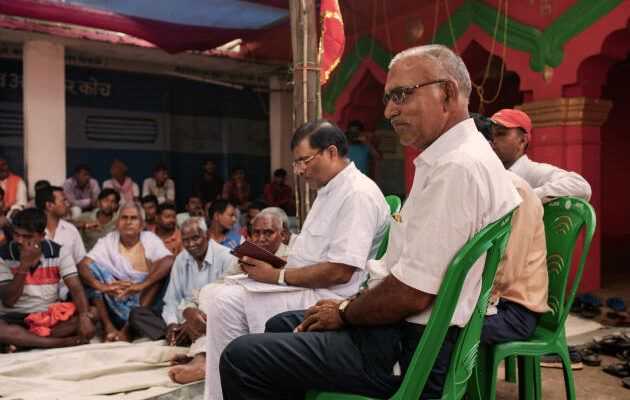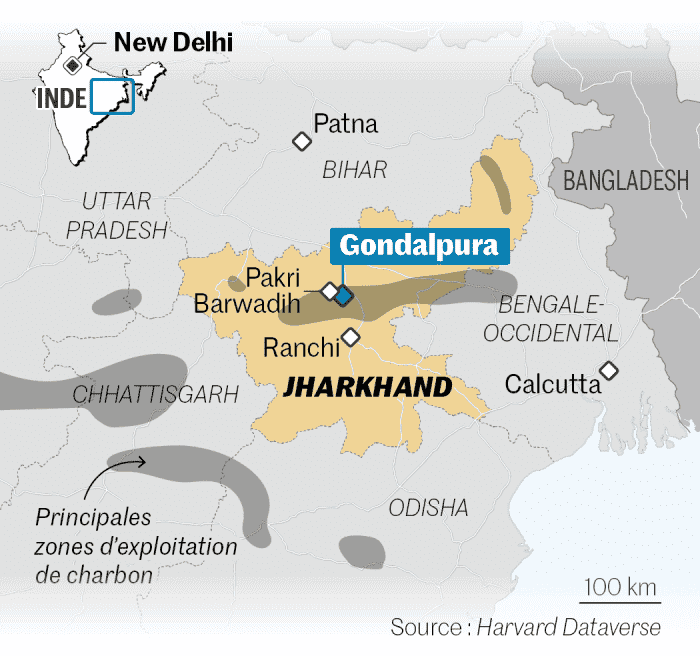ReportingIn this state of India, which has the majority of the national coal reserves, the populations have long been opposed to the exploitation of their basements. But new extraction projects, intended to meet the needs of an entire country, threaten them with eviction.
Dozens of men met at the foot of an imposing fig tree of the pagodas, in the village of Gondalpura. Some came on foot, others made the way from neighboring villages by bicycle or motorbike. Sitting cross-legged on the ground, they get up one after the other to speak. The nerves are on edge. These villagers recently heard about the plans of billionaire Gautam Adani, known to be close to Indian Prime Minister Narendra Modi, to transform their bucolic villages into an open-cast coal mine.
Six villages are threatened with being wiped off the map. Located a hundred kilometers from Ranchi, the capital of the mining state of Jharkhand, to reach them, you have to go deep into the countryside: take small bumpy roads through the green rice fields and skilfully slalom between buffaloes and goats. which account for the majority of road traffic. It is estimated that four million tonnes of coal per year could be extracted from agricultural and forest land in this area. Jharkhand, located in the east of the country and 30% forested, has the majority of India’s coal reserves. But for the populations, this wealth is a source of misfortune.
Extract not to import
The Adani group, the largest private producer of thermal energy in India, won the tender for the operation of the so-called “Gondulpara” coal mine in November 2020, but the inhabitants have not learned. the news only in July 2021. “No one saw fit to warn them, they understood what was going on in an article published in the local press”, says Mithilesh Dangi, an activist from Hazaribagh, the most important town in this eponymous district, literally “The land of a thousand gardens”.
Despite the consequences on the climate, the government wants to develop domestic coal production. After the first wave of Covid-19, in 2020, as part of its self-sufficiency recovery plan, the government auctioned dozens of mining blocks for commercial exploitation, calls for offers were opened to private Indian and foreign companies. Twenty-eight mines have already been sold across the country, and 88 more are currently on the market.
The goal for the South Asian giant is to reduce its dependence on imports. India may have the fourth largest coal reserves in the world, but the country is nonetheless the second largest importer of black gold on the planet. Coal, which produces 70% of electricity, will continue to play a major role in the Indian energy mix for the next thirty-five to forty years, warned the Minister of Coal and Mines, Pralhad Joshi, on October 12, during the auction of a new batch of mines.
You have 67.13% of this article left to read. The rest is for subscribers only.

